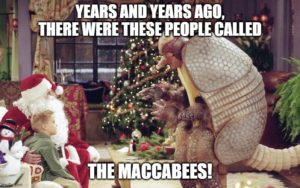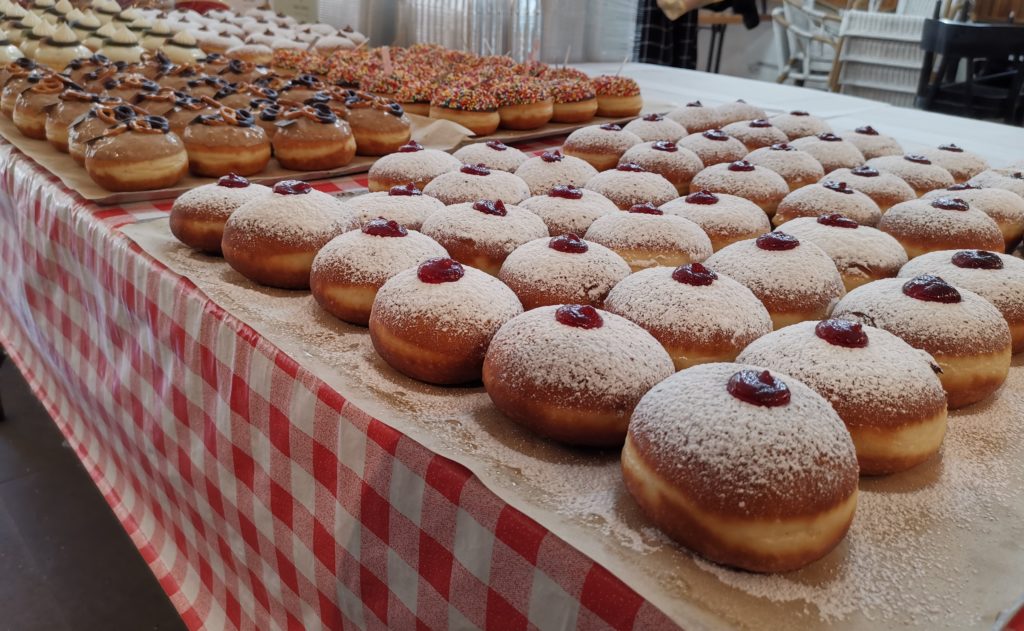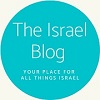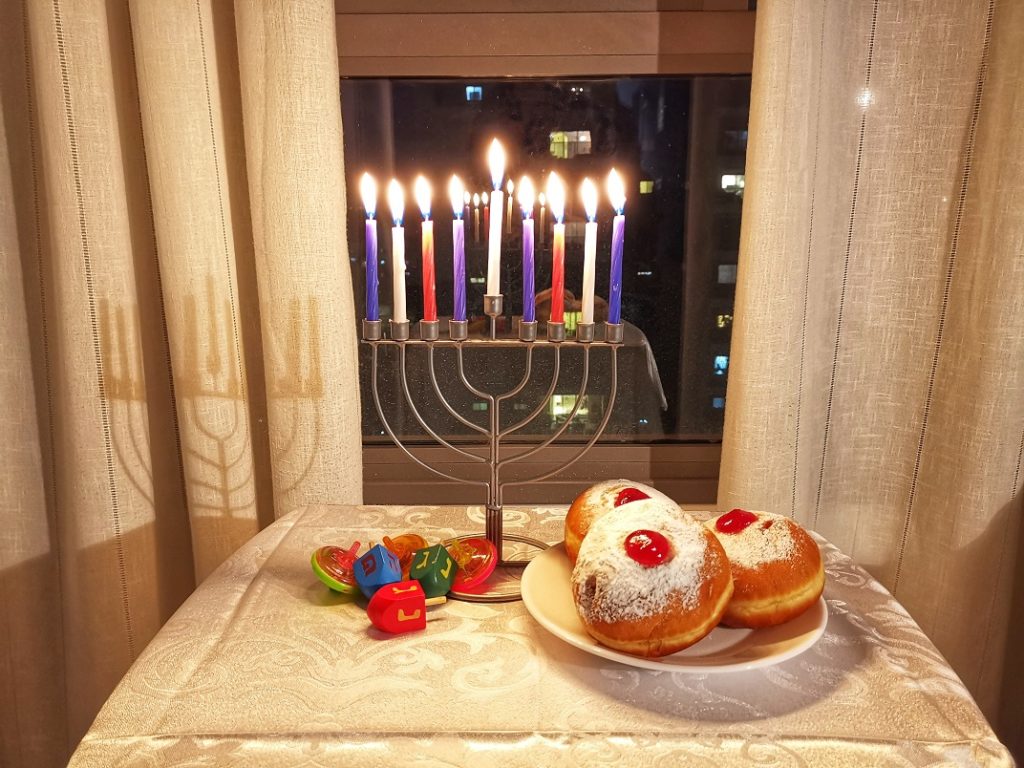A hostile dictator.
A legendary revolt.
And an oily miracle.
Welcome to Hanukkah, aka the Festival of Lights.
- What is Hanukkah?
- What does Hanukkah mean?
- What are the origins of Hanukkah?
- How do you celebrate Hanukkah? What are the rituals and traditions of Hanukkah?
- When is Hanukkah?
What is Hanukkah?
Hanukkah is an eight day Jewish festival. It commemorates the rededication of the Second Temple in Jerusalem at the time of the Maccabean Revolt against the Seleucid Empire (Syrian-Greek Empire)..
The holiday is observed for eight nights and days, starting on the 25th day of Kislev, which is the ninth month of the Hebrew calendar. It means that it usually occurs during late November to late December.
What does Hanukkah mean?
In Hebrew, the name “Hanukkah” means “to dedicate”.
But what exactly was dedicated in Hanukkah?
Let’s go back in time.

The Seleucid Empire was a Hellenistic state in Western Asia that existed from 312 BC to 63 BC. It was founded following the division of the Macedonian Empire established by Alexander the Great.
In around 200 BC, Judea became part of the Seleucid Empire of Syria.
And in 168 BC, a Greek ruler named Antiochus places restrictions on the practice of Judaism. He outlaws Judaism and loots the Second Temple in Jerusalem. And he does not stop there – he orders an altar to Zeus erected in the Temple, bans circumcision and desecrates the Temple by ordering pigs to be sacrificed at the altar of the Temple.
When it comes to Antiochus, when it rains, it pours. And pours hard.
According to Newton’s third law of motion, when two objects interact, they apply forces to each other of equal magnitude and opposite direction.
So when Antiochus cracks down on Judaism and the Temple, it is only natural that the Jews will react with great anger.
And so, a large-scale revolt breaks out. A Jewish priest named Mattathias (of the priestly Hasmonean family) and his five sons lead a large-scale rebellion against the vicious ruler Antiochus. When Mattathias dies in 166 B.C., his son Judah steps up. And within two years the Jews successfully drive the oppressors out of Jerusalem. Hoorah!
Mattathias’s son Judah is also known as Judah Maccabee (“the Hammer”).
After driving the Empire out of Jerusalem, the Jews start cleansing the Temple. A new altar is to be built in place of the polluted one, and new holy vessels are to be made.
In the Temple lies the Menorah. It is required to burn throughout the night every night. But there is a problem – the Menorah needs pure olive oil, with the seal of the high priest. But all flasks were desecrated by Antiochus. All flask but one, with enough oil for one night only.
What should the Jews do?
Well, they use the oil in the flask and light the Menorah.
Miraculously, the Menorah stays lit that night. And another night. And another night. All in all, the Menorah stayed lit for 8 whole nights, which is exactly the time needed to prepare a fresh supply of kosher oil for the Menorah!
So Hanukkah celebrates the rededication of the Second Temple. And it lasts eight days to celebrate the miracle of the oil lighting the Menorah.
What are the origins of Hanukkah?
After the victory of the Maccabees, the Jews in the Land of Israel lived under their own independent kingdom, ruled by the Hasmonean dynasty.
In that kingdom, two books were written, describing the Maccabean revolt and re-dedication of the Temple in Jerusalem as well as the lighting of the menorah.
However, these books are not considered part of Hebrew Bible.
How do you celebrate Hanukkah? What are the rituals and traditions of Hanukkah?
Surprisingly, on Hanukkah there is no obligation to refrain from activities that are forbidden on the Sabbath, so Jews can work as if it were any other day (except for the Sabbath during the holiday, of course).
However, there are additions to the daily prayer service, and a special section is added to the blessing after meals.
As you may have noticed, there are two main elements in the events celebrated on this holiday – the Menorah and oil.
So the rituals also revolve around these elements.
Perhaps the best known ritual is Kindling the Hanukkah lights.
The Hanukkah menorah (also chanukiah or hanukkiah) is a nine-branched candelabrum lit during the eight-day holiday. (And yes, you are right – the Menorah in the Temple only had seven branches.)
In the chanukiah there are eight regular branches, and one special branch called the shamash (servant). The shamash is used to light the other candles in the chanukiah.
So each night during the holiday, the Jewish light candles in the chanukiah.
On the first night, they use the shamash to light up one candle.
On the second night, they use the shamash to light up two candles.
And so it goes on. Each night another candle is lit until the last night, where the shamash is used to light up eight other candles – one in each branch of the chanukiah.
The reason for the Hanukkah lights is to remind everyone of the holiday’s miracle. That is why the chanukiah is placed near a window or near the door leading to the street.
When lighting the candles, blessings are recited over the candles. And after the candles are lit, singing other Hanukkah songs is customary.

So we covered the Menorah part. Now comes the oil part, in the delicious part of fried food.
Delicious, golden, sugary fried food.
The most anticipated food is the sufganiyah (singular, sufganiyot plural) – jam-filled doughnuts, with sugar powder on top.
Another yummy food is bimuelos – fried dough fritter, or a fried dough-donut covered in syrup and/or sugar.
Traditional foods also include latkes, which is a fried potato fritter/potato pancake, and cheese pancakes known as “cassola” or “cheese latkes”.
After lighting the candles and eating lots of fried dough, it’s play time.
During this holiday known as the Festival of Lights, and especially after lighting the candles, it is customary to play (or spin) the dreidel.
The dreidel (called “sevivon” in Hebrew), is a four-sided spinning top. Each side is imprinted with a Hebrew letter which is an abbreviation for the Hebrew words for “A great miracle happened there” – referring to the miracle of the oil that took place in the Temple, of course.
The last custom, the one children probably love the most, is Hanukkah gelt (which means Hanukkah money). Kids get a special gift in the form of money – usually in small coins, but the sky’s the limit.
Since traditionally it is small coins, another treat awaits – chocolate “coins”. It looks like gold coins on the outside. When you peel the packaging, you discover a sweet piece of chocolate.
So basically Hanukkah is celebrated with fire, fried stuff, money and chocolate. Best holiday ever?
When is Hanukkah?
2020 – begins in the evening of Thursday, 10 December and ends in the evening of Friday, 18 December
2021 – begins in the evening of Sunday, 28 November and ends in the evening of Monday, 6 December
2022 – begins in the evening of Sunday, 18 December and ends in the evening of Monday, 26 December
2023 – begins in the evening of Thursday, 7 December and ends in the evening of Friday, 15 December
2024 – begins in the evening of Wednesday, 25 December and ends in the evening of Thursday, 2 January 2025
2025 – begins in the evening of Sunday, 14 December and ends in the evening of Monday, 22 December

